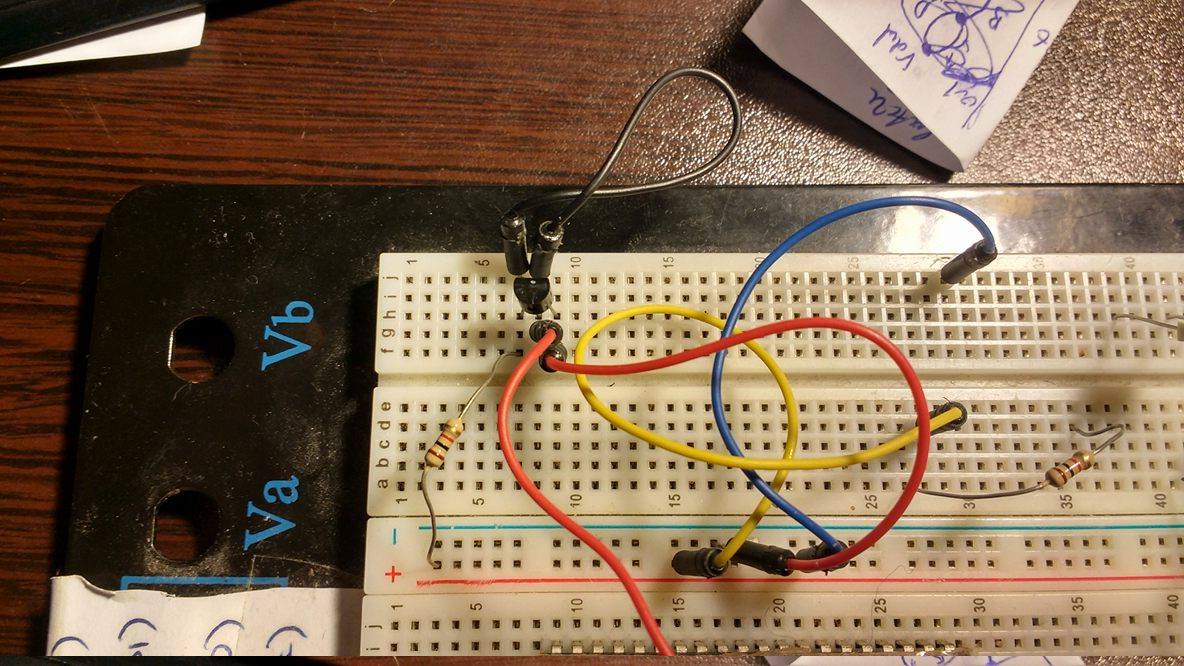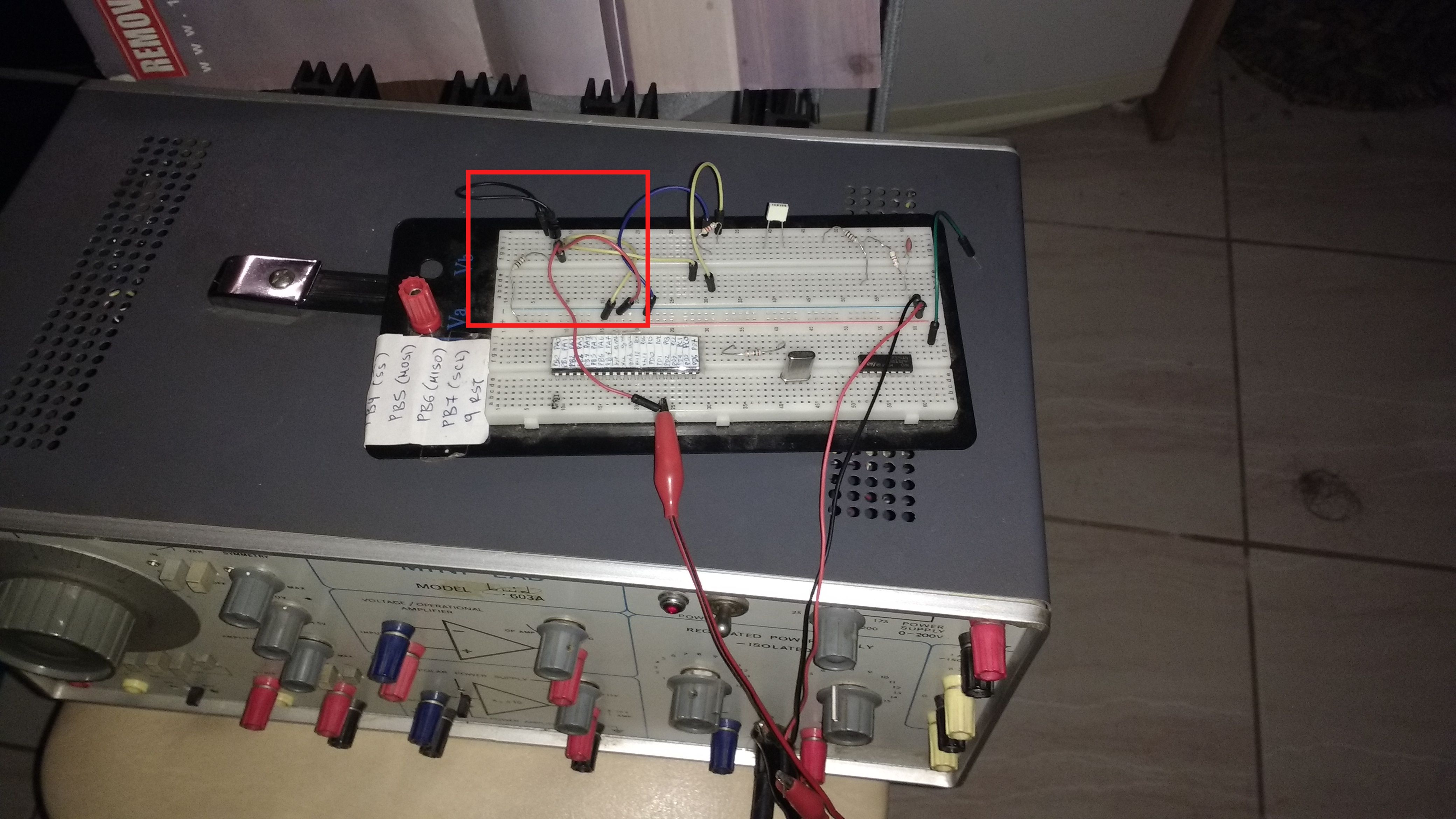

After coming upon this application note, I remembered a very old kit of electronics that I had when I was in younger. In that kit, among many other interesting projects was a temperature sensor made with only one bjt (to do: place a photo of the original book from the kit), and as an indication of the change in temperature, the bjt was driving via its collector a second bjt (both npn) which in turn was driving a led. So I decided to re-test this simple circuit after almost 11 years!
I quickly made the following circuit on the breadboard

The transistor in the circuit above is connected as a diode. As you may know (and you can see in the application note above) the Vbe drop in a transistor is temperature dependent. If you take a look at the first page of that application note, you may say that, ok if temperature rises so does Vbe right? No! That was strange for me too when I tested by heating it with a hairdryer and Vbe begun to fall. So after taking a closer look at the formula (and considering Ic constant) I saw Is staring at me and whispering "hey what if I'm temperature dependent too?" So I opened art of electronics (if you don't have it, YOU MUST GET IT) at page 80 and show this "Is is the saturation current of the particular transistor (depends on T)", ok now we have something. But in what way does Is depends on T? To answer that question I referred to "Microelectronic Circuits 5th edition" (the sedra/smith book) and I wasn't dissapointed! Under the subsection "Collector current", on the section "npn transistor in the active region" there is a description of Is. At first glance there is no connection with temperature (todo: place a photo) but later in the text it states that "Is is approximately doubled for every 5 degrees C of temperature rise". So my explanation is that the behavior of the relation between Vbe and T (bottom of the first page on the app note) is determined indirectly, from Is's dependency from temperature (I have to do the math to be sure :todo). I measured Vbe with a multimeter on the base of a 2n3904 (MEAS spot). Sadly I forgot to take pictures with the hairdryer (Vbe falling), but I put the breadboard with the circuit on the freezer and saw the Vbe rising!
Breadboard getting ready to get into the freezer (Vcc about 6V)

...some seconds into the freezer

...2 minutes later

...then I got it outside the freezer and let it for about 2-3 minutes and I got this(which continued to fall):

At some point in the future I'll come back to model the Vbe-temp relation so I can make use of it and put some pictures while heating the transistor.